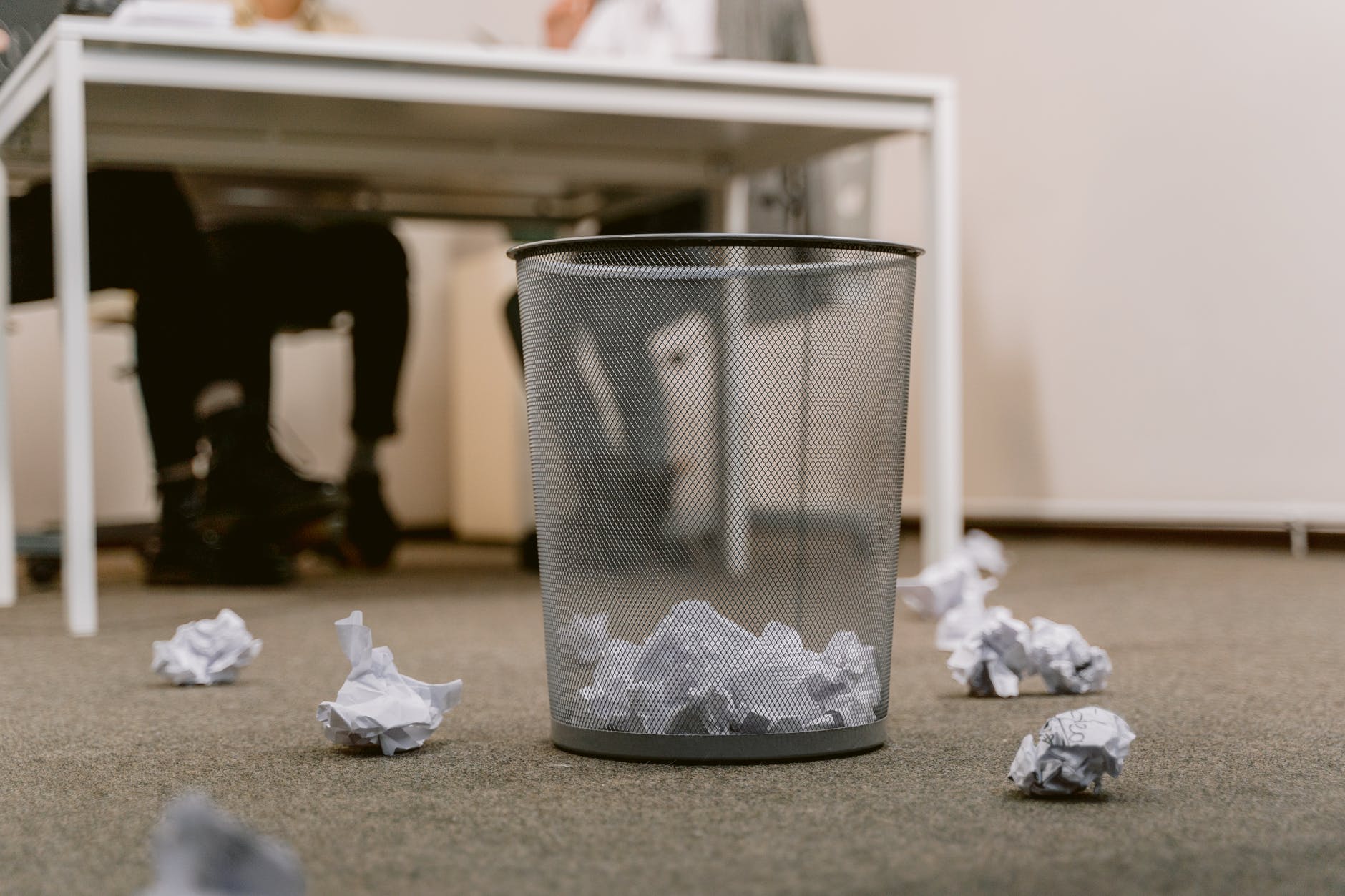
Photo by Tima Miroshnichenko on <a href="https://www.pexels.com/photo/crumpled-papers-inside-the-trash-bin-at-the-office-6913195/" rel="nofollow">Pexels.com</a>
According to recent EPA statistics, the average person in the US generates 4.9 pounce of waste in the US. This means Americans generate enough waste to fill a 90,000 seater football stadium each day. Businesses are one of the major waste generators, and even if you run a small business, it is necessary to find ways to cut waste production. These waste reduction strategies can save you expensive waste hauling and demonstrate your business’s contribution to reducing greenhouse emissions and global hazards to human health.
- Train your staff
Forward-thinking businesses, particularly those in the manufacturing industry, train their employees on the need for waste reduction. Staff who have not been trained in this area will be unaware of the costs of wasteful actions such as throwing away reusable supplies. Some areas the training should focus on include helping employees recognize when materials can be reusable, creating awareness of individual materials and overall manufacturing costs, and the best way to contribute to conservation and waste reduction along production lines. Your staff is more likely to embrace your waste reduction strategies when they know that customers are now selecting products based on their environmental friendliness.
- Know where your waste comes from
This involves examining the supply chain for goods that end in your business trash. What kind of consumables do you keep in hand, and is it possible to move to compostable or recyclable products? If this is the case, it can be useful to ensure your composting and recycling bins are more conveniently placed and labeled differently than those that will end up at the landfill. Hauling businesses usually supply free templates for signage with photographs showing what goes where. It can be useful to assess how full the dumpsters, compactors, and recycling bins are before pick-up. Facilities that increase their recycling rates can save money by reducing the number of pick-ups.
- Optimize communication channels
The effectiveness of your communication channels has a significant impact on the management of costly logistical challenges that result in waste. As surprising as this may sound, it is a major factor in supply chain waste and can eat up your revenues. Logistical challenges caused by poor communication architecture might waste transportation space, goods, and fuel. For instance, miscommunication can cause a freight truck to arrive at the wrong facility and cause fuel wastage. Slow communication can also cause the shipment to arrive in batches instead of being combined into one flight, causing you to lose money due to the additional trip.
- Compost it
While organic waste is the biggest element of waste streams, this may include organic materials such as yard trimmings and food scraps. Composting can be carried out on-site or at municipal or commercial facilities. And there are hundreds of office buildings compost and compositing service providers in major US markets. Using a compost facility may be more cost-effective than hauling your garbage to a landfill. You can learn more about composting information and resources from the US Composting Council. You can also follow https://www.scsengineers.com/services/landfill-gas/ to learn how landfills can be a more cost-friendly way to manage waste and protect the environment. Depending on your needs, you can choose the more effective one for you.
- Packaging
It would be best to think about the packaging that your primary items, supplies, and shipments come in. Excessive packaging can quickly increase the quantity of waste generated for each product; the excess boxes and containers serve no purpose and are most likely discarded. A study suggests that packaging is the dominant waste component, with over 50% share globally. Excessive and unnecessary packaging can pollute the air in several ways. For instance, wasteful packaging contributes to increased waste incineration activities. However, during processing, hazardous gases are released into the atmosphere, including vinyl chloride, CFCs, and hexane.
- Demand forecasting
Demand forecasting is one of the most effective techniques to prevent industrial waste. This method examines anticipated client demand for firms to make more precise production decisions. Businesses that don’t have a good strategy for estimating demand often overstock and sit on excess inventory that they can’t sell. Alternatively, they may understock, resulting in rushed supply and production orders to prevent losing valuable sales. This puts additional strain on the supply chain, perhaps leading to errors and waste due to the extra processes necessary to accelerate production.
For a successful business waste reduction process, it is essential to promote ongoing communication and collaboration between your staff and supply chains to dispose of your waste. These effective ways should help you do the right thing and save you money.


